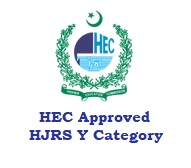Article Format-Structure
We strongly encourage Articles to be from 5000 to 10000 words (including footnotes). Student Notes and Book Reviews should be a maximum of 3000 words (including footnotes).
The main structure/style of the manuscript submitted Journal shall be as follows:
Title (font size 13, Times New Roman):
Active verbs are used instead of complex noun-based phrases. It is around 10 to 12 words long and summarises the main idea or ideas of the study.
Abstract (150-200 words):
It discusses a compact view of the research problem, purpose of study, research design and key findings.
Keywords (seven-ten):
It does not use words or phrases from the title and supplements the title's contents. These are descriptive, representing key concepts and nouns.
Introduction (and background):
It describes the purpose, scope, context, significance, background, hypothesis(es), question(s), brief methodology, outcome(s), and outline of the remaining structure/organisation of the article.
Literature Review (relevant literature/sources)
It gives a description, summary, and critical evaluation of sources explored in relation to the research problem(s) being investigated.
Conceptual and Theoretical Framework (or Model):
The conceptual framework presents/makes the construction of the study clearer, cleaner, and more straightforward; and the theoretical framework within it explains the relationships that are explored within the study.
Research Methodology (methods and materials):
It describes the actions taken for the investigation of the research problem and the rationale for the application of the specific procedures or techniques used to identify, select, process, and analyse the information applied to understanding the problem.
Data and Results (if applicable):
It reports the results of the study based upon the methodology(ies) being applied, and in a logical sequence without bias or interpretation if data is generated from the author’s own research.
Analysis and Discussion (and findings):
It interprets and describes the significance of findings in light of what was already known about the research problem(s). It explains new understanding or insights being emerged based on studying the problem. It is connected to the introduction through research questions and/or hypothesis (es), and the literature being reviewed for the study.
Conclusion (suggestions and future direction):
It helps the readers to understand why the research should matter to them. It gives a synthesis of key points and, (if applicable), suggests new areas for future research.
References (list of cited sources):
It contains a list of updated published and unpublished material on the topic including research articles from internationally reputed journals, especially those indexed in WOS, Scopus, etc.
APA The journal follows the American Psychological Association (APA) referencing style.
- Acknowledgments (if any)
- Appendices/Annexures (if any)






